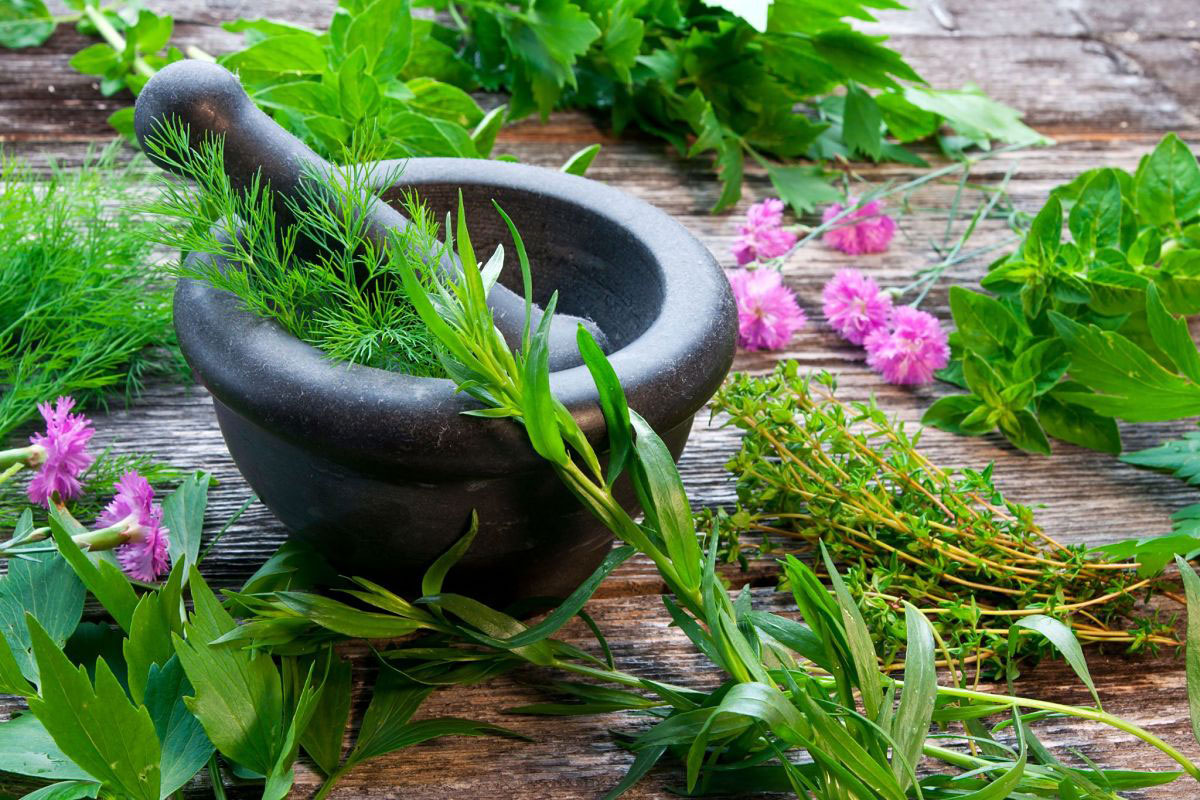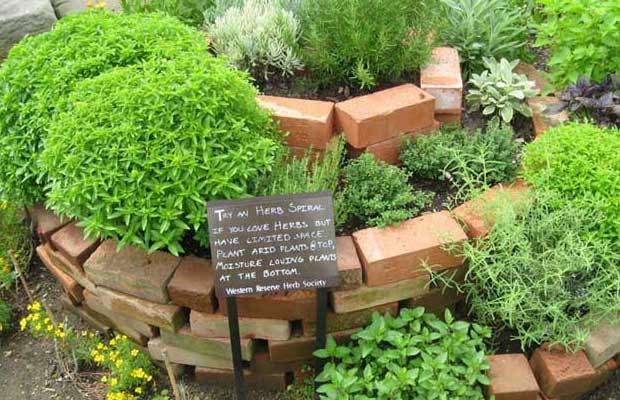
Don’t kill, spray, tear up, or destroy the weeds in your garden, yard, and fence rows. Many of them are actually highly-regarded, widely-used, and extremely-valuable medicinal herbs! What could be easier than growing an herbal medicine garden with no effort? Of course, you’ll have to harvest your edible weeds, but you would do that anyhow: it’s called weeding.
Spring is an especially fertile time for harvesting your edible weeds – roots and all – and turning them into medicines. Here then are some tips on how to find, harvest, prepare, and use a baker’s dozen (13) of common edible weeds that probably already grow around you.
To make your medicines you’ll need glass jars of various sizes with tight-fitting lids. And at least a pint each of apple cider vinegar (pasteurized), vodka (100 proof is best, but 80 proof will do), and pure olive oil (not extra virgin) or good quality animal fat such as lanolin, lard, or belly fat from a lamb or kid. You will also want a knife, a cutting board, and some rags to mop up spills.
In general, you will fill a jar (of any size) with coarsely-chopped fresh, but dry, plant material. (Do not wash any part of the plant except roots, if you are using them, and be sure to dry those well with a towel before putting them in your jar.) Then you will fill the jar with your menstruum, that is, the vinegar, the oil, or the alcohol. Label well and allow to stand at room temperature, out of the sunlight for at least six weeks before decanting and using. (See Healing Wise for info on making preparations.)
A field guide is helpful for positively identifying your weeds. The one I like best is: A Guide to the Identification of New Zealand Common Weeds in Colour, complied by E. A. Upritchard. This book even shows you how the edible weeds look when they are emerging.
Ready? OK! Let’s go outside and see what we can find.
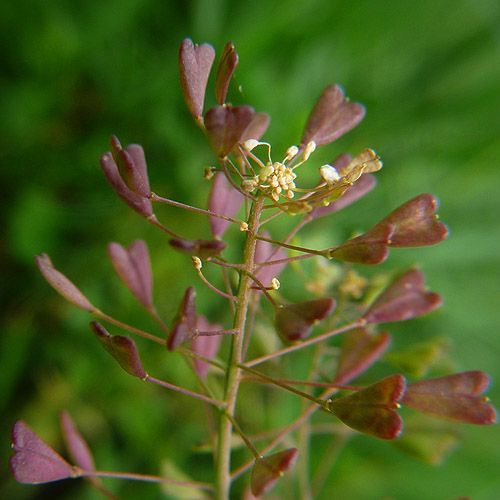
Shepherds’s purse (Capsella bursa pastoris) is an annual in the mustard family. Cut the top half of the plant when it has formed its little heart-shaped “purses” (seed pods) and make a tincture (with alcohol), which you can use to stop bleeding. Midwives and women who bleed heavily during their period praise its prompt effectiveness. Gypsies claim it works on the stomach and lungs as well. A dose is 1 dropperful (1ml); which may be repeated up to four times a day.
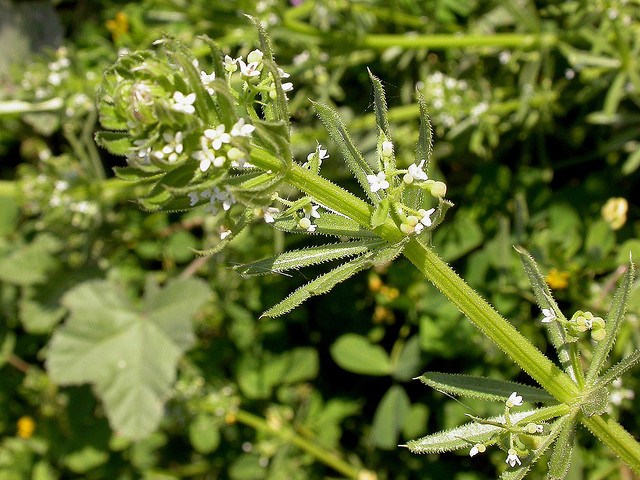
Cleavers (Gallium aparine) is a persistent, sticky plant which grows profusely in abandoned lots and the edges of cultivated land. The entire plant is used to strengthen lymphatic activity. I cut the top two-thirds of each plant while it is in flower (or setting seeds) and use alcohol to make a tincture which relieves tender, swollen breasts, PMS symptoms, and allergic reactions. A dose is 15-25 drops (.5 – 1 ml); repeated as needed.
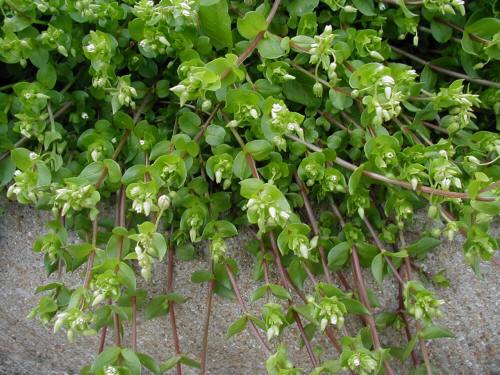
Chickweed (Stellaria media) this edible weed has many uses, including delicious salad greens. I cut the entire top of the plant and eat it or use alcohol to make a tincture, which dissolves cysts, tonifies the thyroid, and aids in weight loss. A dose is a dropperful (1 ml), up to three times a day.
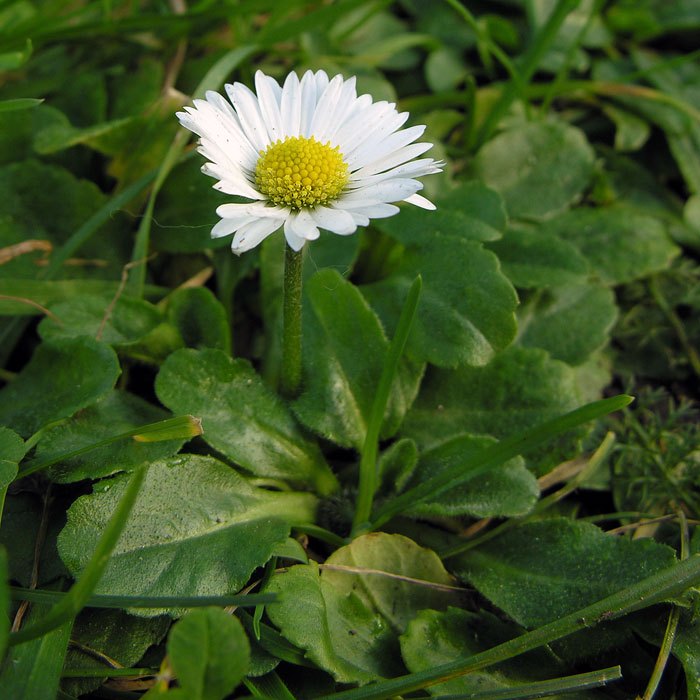 Daisy
Daisy
Daisy (Bellis perennis) is a common perennial edible weed of lawns and open areas. Quite different from the native daisy (Lagenifera petiolata), the little English daisy is related to feverfew and has similar abilities. I use the leaves and flowers to make a tincture (with alcohol) or a medicinal vinegar which relieves headaches, muscle pain, and allergy symptoms. A dose is a dropperful of the tincture (1 ml), up to twice a day; or a tablespoon of the vinegar in the morning.
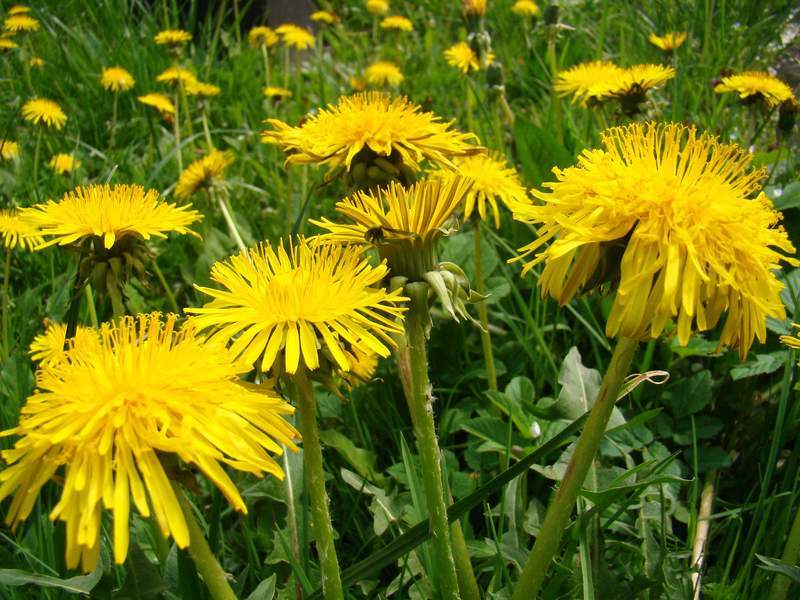 Dandelion
Dandelion
Dandelion (Taraxacum officinalis) is a persistent perennial of lawns and gardens and one of the best known medicinal herbs and edible weeds in the world. (The native dandelion of New Zealand – Taraxacum magellanicum – is medicinal too.) Those who love a pure green lawn curse the sunny yellow flowers of common dandelion. But those who are willing to see beauty anywhere (such as children and herbalists) treasure this edible weed. You can use any part of the dandelion – the root, the leaves, the flowers, even the flower stalk – to make a tincture or medicinal vinegar which strengthens the liver. A dose of 10-20 drops of the tincture (.5-1 ml) relieves gas, heartburn, and indigestion, as well as promoting healthy bowel movements. A tablespoon of the vinegar works well, too. More importantly, taken before meals, dandelion increases the production of hydrochloric acid in the stomach, thus increasing bio-availability of many nutrients, especially calcium. The fresh or cooked green leaves are loaded with carotenes, those anti-cancer, anti-heart disease helpers. And the oil of the flowers is an important massage balm for maintaining healthy breasts. (There’s lots more information on dandelions in Healing Wise.)
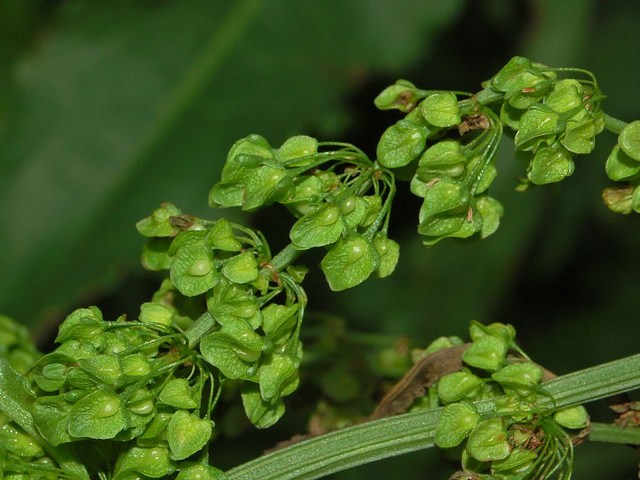 Dock
Dock
Dock, also called yellow dock, curly dock, and broad dock is a perennial plant, which my Native American grandmothers use for “all women’s problems.” The Maori call it paewhenua or runa. It is another plant that disagrees with sheep, especially when the land is overgrazed. I dig the yellow roots of Rumex crispus or R. obtusifolius and tincture them in alcohol to use as an ally when the immune system or the liver needs help. A dose is 15-25 drops (.5-1 ml). I also harvest the leaves and/or seeds throughout the growing season and make a medicinal vinegar, taken a tablespoon at a time, which is used to increase blood-levels of iron, reduce menstrual flooding and cramping, and balance hormone levels. If the chopped roots are soaked in oil for six weeks, the resulting ointment is beneficial for keeping the breasts healthy.
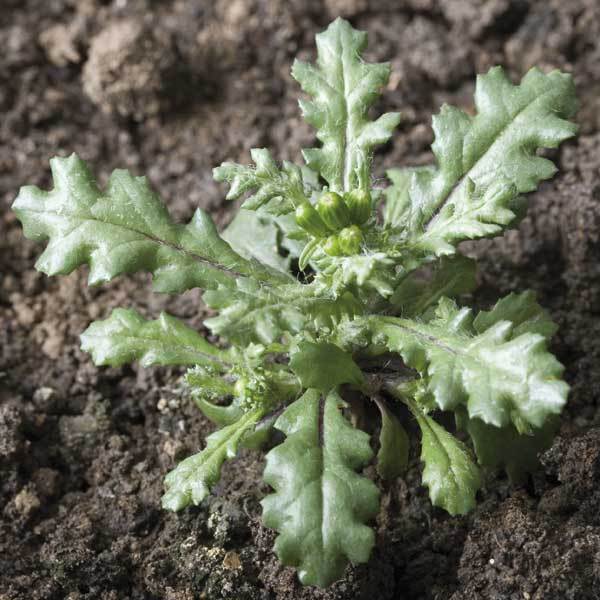 Groundsel
Groundsel
Groundsel (Senecio vulgaris) and Ragwort (Senecio jacobea) are hardy perennials that have a reputation for poisoning livestock, like their cousin tansy. Although not good for sheep, these two Senecios are some of the world’s most ancient healing plants, having been found in a grave 60,000 years old. You can use the flowering tops and leaves with your alcohol to make a tincture which acts slowly to tonify the reproductive organs, ease PMS, and stop severe menstrual pain. A dose is 5-10 drops (.2-.5 ml) per day, used only once a day, but for at least 3 months. (A larger dose is used to speed up labor.)
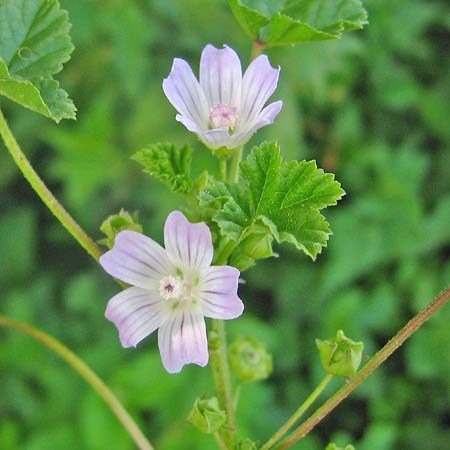 Mallows
Mallows
Mallows (Malva neglecta, M. parviflora, M. sylvestres) grow well in neglected gardens and are surprisingly deep-rooted. The flowers, leaves, stalks, seeds, and roots are rich in sticky mucilage which is best extracted by soaking the fresh plant in cold water overnight or longer or by making a medicinal vinegar. The starch is extraordinarily soothing internally (easing sore throats, upset tummies, heart burn, irritable bowel, colic, constipation, and food poisoning) and externally (relieving bug bites, burns, sprains, and sore eyes). The leaves, flowers, and bark (especially) of the native Hohere (Hoheria populnea) are used in exactly the same way by Maori herbalists.
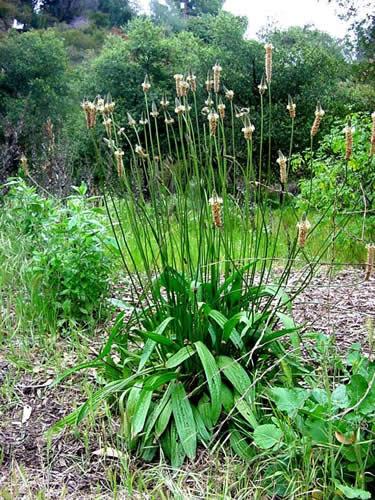 Plantain
Plantain
Plantain, also called ribwort, pig’s ear, or bandaid plant – and kopakopa or parerarera by the Maori – is a common edible weed of lawns, driveways, parks, and playgrounds. Identify it by the five parallel veins running the length of each leaf. You may find broad leaf plantain (Plantago major) with wide leaves, or narrow leaf plantain (Plantago lanceolata) with lance-thin leaves. Either can be used to make a healing poultice or a soothing oil widely regarded as one of the best wound healers around. Not only does plantain increase the speed of healing, it also relieves pain, stops bleeding, draws out foreign matter, stops itching, prevents and stops allergic reactions from bee stings, kills bacteria, and reduces swelling.
Try a poultice or a generous application of plantain oil or ointment (made by thickening the oil with beeswax) on sprains, cuts, insect bites, rashes, chafed skin, boils, bruises, chapped and cracked lips, rough or sore hands, baby’s diaper area, and burns.
To make a fresh plantain poultice: Pick a leaf, chew it well and put it on the boo-boo. “Like magic” the pain, itching, and swelling disappear, fast! (Yes, you can dry plantain leaves and carry them in your first aid kit. Chew like you would fresh leaves.)
To make plantain ointment: Pick large fresh plantain leaves. Chop coarsely. Fill a clean, dry, glass jar with the chopped leaves. Pour pure olive oil into the leaves, poking about with a chopstick until the jar is completely full of oil and all air bubbles are released. Cap well. Place jar in a small bowl to collect any overflow. Wait six weeks. Then strain oil out of the plant material, squeezing well. Measure the oil. Heat it gently, adding one tablespoon of grated beeswax for every liquid ounce of oil. Pour into jars and allow to cool.
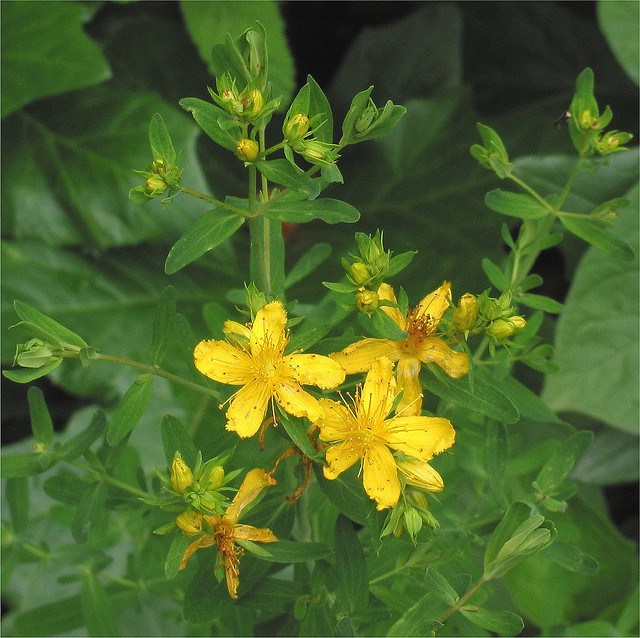 St. Johns Wort
St. Johns Wort
St. Joan’s/John’s wort (Hypericum perforatum) This beautiful perennial wildflower may be hated by sheep farmers but herbalists adore it. The flowering tops are harvested after they begin to bloom (traditionally on Solstice, June 21) and prepared with alcohol, and with oil, to make two of the most useful remedies in my first aid kit. Tincture of St. Joan’s wort not only lends one a sunny disposition, it reliably relieves muscle aches, is a powerful anti-viral, and is my first-choice treatment for those with shingles, sciatica, backpain, neuralgia, and headaches including migraines. The usual dose is 1 dropperful (1 ml) as frequently as needed. In extreme pain from a muscle spasm in my thigh, I used a dropperful every twenty minutes for two hours, or until the pain totally subsided. St. Joan’s wort oil stops cold sores in their tracks and can even relieve genital herpes symptoms. I use it as a sunscreen. Contrary to popular belief, St. Joan’s wort does not cause sun sensitivity, it prevents it. It even prevents burn from radiation therapy. Eases sore muscles, too.
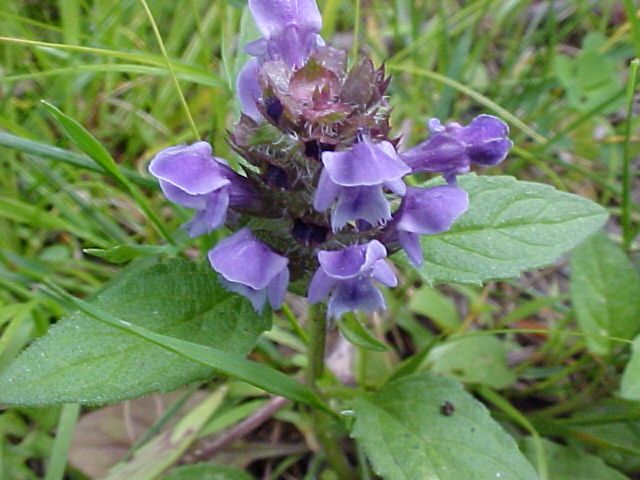 Self heal
Self heal
Self Heal (Prunella vulgaris) This scentless perennial mint is one of the great unsung healers of the world. The leaves and flowers contain more antioxidants – which prevent cancer and heart disease, among other healthy traits – than any other plant tested. And as part of the mint family, self heal is imbued with lots of minerals, especially calcium, making it an especially important ally for pregnant, nursing, menopausal, and post-menopausal women. I put self heal leaves in salads in the spring and fall, make a medicinal vinegar with the flowers during the summer, and cook the flowering tops (fresh or dried) in winter soups.
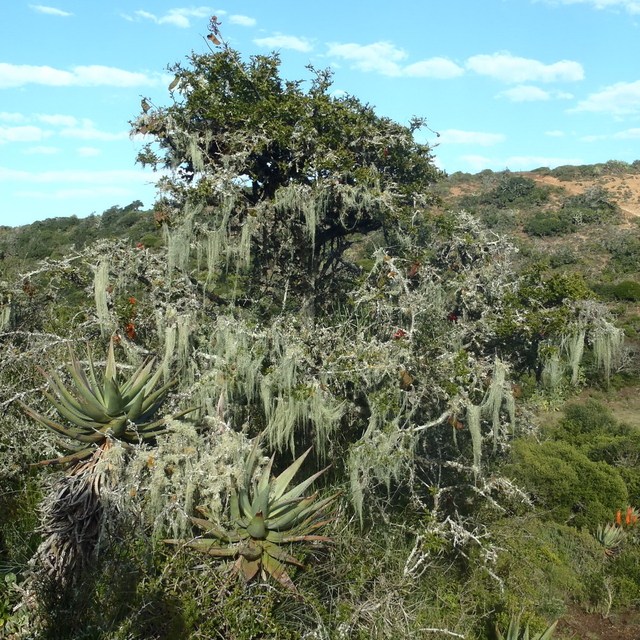 Old Man’s Beard
Old Man’s Beard
Usnea (Usnea barbata) is that many-stranded grey lichen hanging out of the branches of your apple trees or the Monterey pines planted in the plantation over there or in almost any native tree in areas of the South Island Alps, where it is known as angiangi to the Maori. If in doubt of your identification: Pull a strand gently apart with your hands, looking for a white fiber inside the fuzzy grey-green outer coat. To prepare usnea, harvest at any time of the year, being careful not to take too much. Usnea grows slowly. Put your harvest in a cooking pan and just cover it with cold water. Boil for about 15-25 minutes, or until the water is orange and reduced by at least half. Pour usnea and water into a jar, filling it to the top with plant material. (Water should be no more than half of the jar.) Add the highest proof alcohol you can buy. After 6 weeks this tincture is ready to work for you as a superb antibacterial, countering infection anywhere in the body. A dose is a dropperful (1 ml) as frequently as every two hours in acute situations
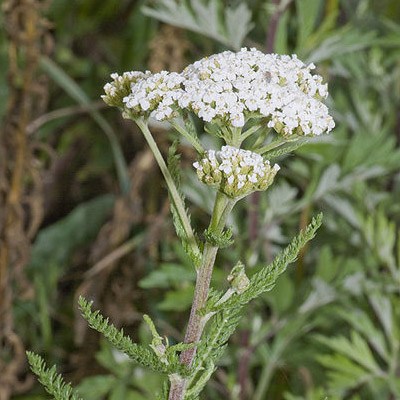 Yarrow
Yarrow
Yarrow (Achellia millefolium) This lovely perennial weed is grown in many herb gardens for it has a multitude of uses. Cut the flowering tops (use only white-flowering yarrow) and use your alcohol to make a strongly-scented tincture that you can take internally to prevent colds and the flu. (A dose is 10-20 drops, or up to 1 ml). I carry a little spray bottle of yarrow tincture with me when I’m outside and wet my skin every hour or so. A United States Army study showed yarrow tincture to be more effective than DEET at repelling ticks, mosquitoes, and sand flies. You can also make a healing ointment with yarrow flower tops and your oil or fat. Yarrow oil is antibacterial, pain-relieving, and incredibly helpful in healing all types of wounds.















